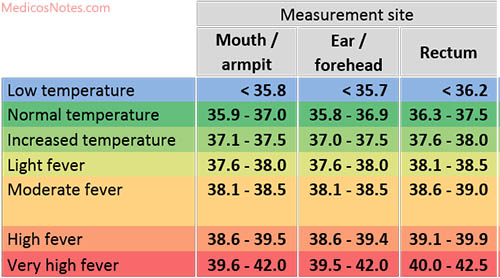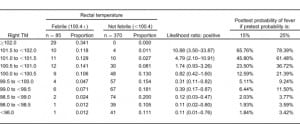
One possible physiological benefit is that fever helps keep pathogens from replicating and can destroy them. While some may try to reduce fever, higher temperatures seem to provide an advantage in fighting infections and are actually part of your body’s natural immune response. Oral temperatures of 99.5 F and under-the-arm temperatures of 99 F, are considered fever in children. Medical practitioners generally classify fever as a temperature greater than 100.4 F (38 C), as measured rectally in both adults and children. Tetra Images via Getty Images When things heat up

It’s common to take something to reduce fever, but somewhat elevated temperatures can help your immune system work. Similarly, body temperature will fluctuate through the varying phases of females’ menstrual cycle. Both the 1871 book by Wunderlich and more recent research have demonstrated that people typically experience their lowest body temperatures overnight. In addition to changes that occur as the result of age, everyone has variation throughout the day based on their circadian rhythms. Digesting food, physical activity and infection increase the metabolic rate and can all raise your temperature.īabies may have slightly elevated normal body temperatures and caloric needs as a result of increased metabolic rate to support growth and development, while seniors may have slightly lower body temperatures due to lower rates of cellular growth and repair. Your body’s temperature is based on the heat from your energy production. This process is only about 25% efficient, so as chemical bonds are broken, the majority of their energy gets released as heat. Metabolism is the way your body turns fuel – the carbohydrates, fats and proteins from the food you eat – into usable energy. Keeping your body warm and workingīody temperature is a byproduct of your metabolism. Someone who’s been in a cool environment may falsely screen negative for fever, while someone who’s been rushing outside in the sun may falsely screen positive.

#Normal temperature range skin#
This is one reason skin temperature might not be a foolproof screening tool for COVID-19. Measurements taken at sites close to the body’s surface – like the ear or skin – are influenced by the surrounding environment and will tend to be lower.

Temperature measurements – like oral or rectal – taken closer to the sites of more energy use and will produce more heat, resulting in higher temperature readings. Each of these locations will have slightly different normal values. But they suggest the reduction could also reflect physiological shifts in metabolic rate and reductions in inflammation related to underlying medical conditions that people manage more effectively now than in the past.Ī temperature reading will differ depending where on the body you measure it some of the common sites include in the mouth, in the ear, under the armpit, on the forehead, or rectally. The researchers acknowledge these observed reductions could be the result of changes in equipment and measurement technique. Readers seem to have taken away the monolithic 98.6 number, but Wunderlich in fact wrote that based on his measurement “healthy persons under varying conditions” had temperatures that ranged from 97.16 F to 100.4 F.Įven accounting for that variation, a recent study suggested that, across the population, core temperatures have declined about 0.6 F (0.3 C) below the traditionally accepted levels and about 0.85 F (0.5 C) compared to the end of the 19th century and beginning of the 20th century. Many trace this number back to an 1871 book on medical thermometry by a German physician named Carl Reinhold August Wunderlich who measured the underarm temperatures of thousands of people. Individual differences in normal body temperature: longitudinal big data analysis of patient records. BMJ.



 0 kommentar(er)
0 kommentar(er)
